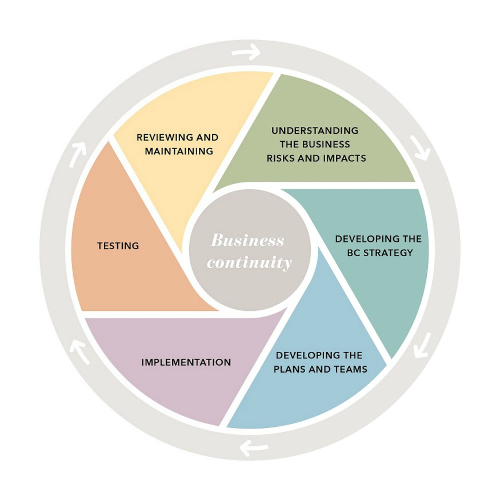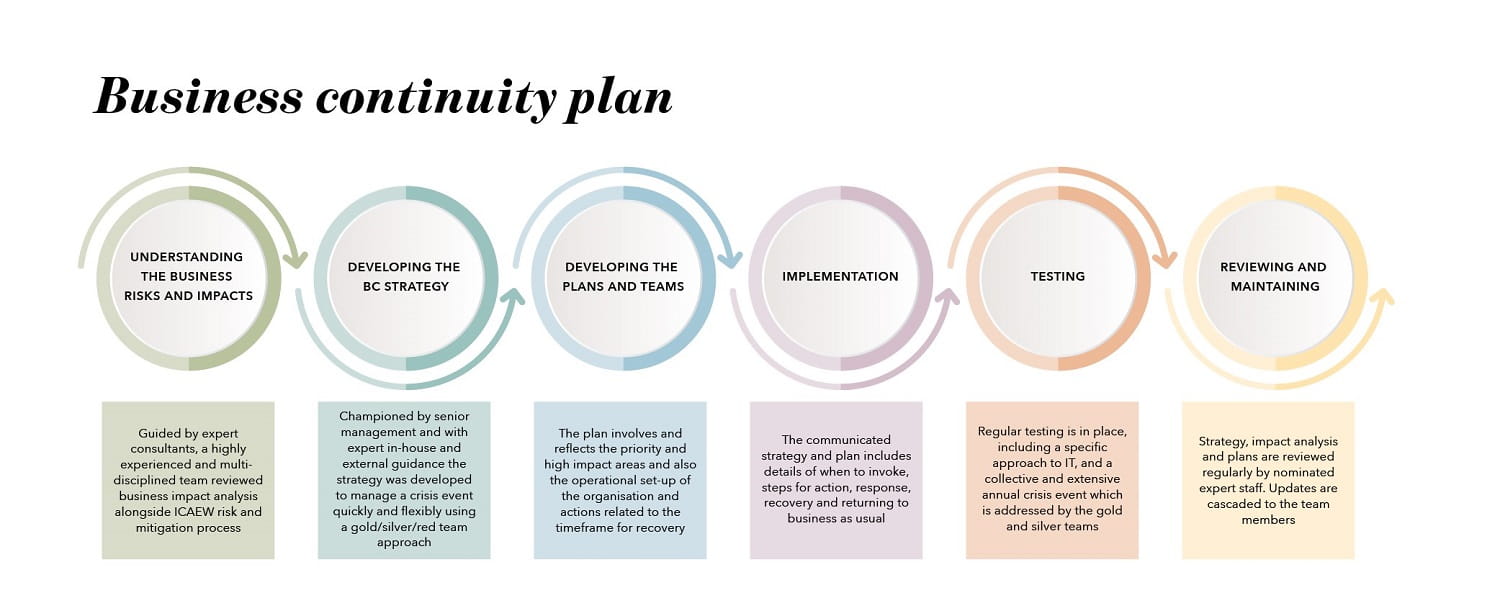The ICAEW Crisis Management Handbook provides details of the plan and has been produced to assist Gold (strategic, key decisions) and Silver (tactical) teams in their assigned responsibilities when leading the organisation in the event of a crisis. The handbook includes:
- The definition of business continuity and ICAEW’s objectives in a crisis situation.
- The key teams and their roles. Communication strategy.
- Alternate location information, checklists and conference bridge phone numbers.
- Activation criteria and reference to the Everbridge ‘staff contact system’.
- Business continuity, security and expert consultant contact details including work and mobile phone details.
The handbook documentation is supplemented by:
- Business impact analysis (BIA).
- Departmental business continuity plans.
- A pocket-sized action plan.
The development of the BC strategy, including crisis event management and business continuity planning, has been developed with support from expert consultants including highly experienced event testers who have worked on complex projects such as the London 2012 Olympics.
The plan is championed by ICAEW senior management and in many cases includes their direct involvement in development, oversight and testing of the plan.
The diagrams below highlight the key elements of the ICAEW BC approach.


Cyber-security
Cyber-security, including data protection and management of a data asset register, has been identified as a key risk. ICAEW has put in place a specific team to mitigate this and also to work closely with the BC recovery planning teams.
BC plan
The ICAEW plan is designed to direct and control a crisis incident. It covers for example operational sites in Milton Keynes and London. The BC strategy accepts that if there’s a major disruptive event, ICAEW may need to materially reduce its immediate operations.
In the initial recovery phase, the focus will be on recovering the key business-critical activities as identified by the operational recovery plans and this will be guided by the business impact analysis (BIA).
If disruption lasts longer than two weeks, ICAEW will use the first two weeks to identify alternative arrangements. These may include alternative accommodation and facilities for staff.
In responding to a major incident and/or operational disruption, ICAEW will concentrate its activities and resources on meeting the following objectives, shown in priority order:
- protect and preserve the safety and well-being of employees, visitors and contractors;
- recover mission critical systems and resume critical ICAEW business operational activities;
- communicate appropriately with employees, media, principal contractors and stakeholders; and
- continuously manage the recovery process to ensure timely and efficient resumption of normal business.
Plans and BIA are reviewed formally every 6 months. Updates to plans may occur more frequently for example if there is a material restructure to a team.
The plan includes details of:
- The BC operating structure.
- When to invoke.
- Steps for action, response, recovery and returning to business as usual.
- Details of key operational contacts such as insurance and suppliers.
Detailed plans include for example those for property and facilities, IT, corporate communications, HR, finance and operating departments such as Professional Standards.
Copies of the plan are:
- held by the BC operational owner and/or senior management team representative;
- made available to BC team staff and available at all times on the ICAEW network (pocket sized versions of the plan are held in hard copy and electronic form by the BC team members); and
- stored at a secure off-site data storage capability.